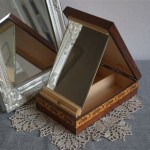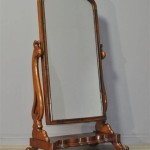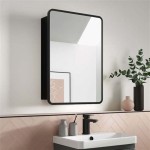Mosaic Mirror Tiles: A Comprehensive Guide
Mosaic mirror tiles offer a captivating blend of functionality and artistry. Their reflective surfaces enhance light and create a sense of spaciousness, while the mosaic format allows for intricate designs and personalized aesthetics. This article explores various aspects of mosaic mirror tiles, from their composition and applications to installation and maintenance.
Material and Construction
Mosaic mirror tiles are typically constructed from small pieces of mirror, cut and arranged into a pattern or design. These individual pieces, often square or rectangular but also available in various shapes, are bonded to a backing mesh for easier installation. The backing material can vary from fiberglass mesh for flexibility to paper or plastic netting.
Types of Mirror Tiles
Several variations of mosaic mirror tiles cater to different aesthetic preferences and project requirements. The most common types include:
- Clear Mirror Tiles: These offer a traditional, reflective surface, ideal for maximizing light and creating the illusion of more space.
- Tinted Mirror Tiles: Available in various colors, such as bronze, gray, and antique, these add a touch of color and a unique reflective quality.
- Patterned Mirror Tiles: These feature etched or engraved designs on the mirror surface, adding an extra layer of visual interest.
- Beveled Mirror Tiles: The edges of these tiles are angled, creating a framed look and adding depth to the mosaic.
- Specialty Mirror Tiles: These include antique, crackled, or iridescent finishes for more unique applications.
Applications of Mosaic Mirror Tiles
The versatility of mosaic mirror tiles allows for a wide range of applications in both residential and commercial settings. Their reflective properties make them particularly effective in smaller spaces.
- Backsplashes: In kitchens and bathrooms, mirror tiles create a striking backsplash, reflecting light and adding a touch of glamour.
- Wall Accents: Used as a focal point on a wall, mosaic mirror tiles can add depth and visual interest to any room.
- Decorative Borders: They can be incorporated as borders around other tile installations or used to frame mirrors and artwork.
- Furniture Inlays: Mosaic mirror tiles can be used to embellish furniture pieces, such as tabletops and cabinet doors.
- Craft Projects: Their smaller size makes them ideal for various DIY crafts, including jewelry boxes, picture frames, and vases.
Installation Process
Installing mosaic mirror tiles requires careful planning and precision. While professional installation is recommended for complex projects, simple applications can be undertaken with some DIY skills.
- Surface Preparation: The surface must be clean, dry, and level. Any imperfections should be addressed before tiling.
- Adhesive Selection: Choose an adhesive suitable for both mirror and the substrate material. Thin-set mortar is a common choice.
- Tile Placement: Carefully place the tile sheets onto the adhesive, ensuring proper alignment and spacing.
- Grouting: After the adhesive dries, apply grout to fill the spaces between the tiles. Unsanded grout is generally recommended for mirror tiles.
- Cleaning: Remove excess grout promptly and clean the tiles thoroughly after the grout has cured.
Maintenance and Care
Maintaining the beauty of mosaic mirror tiles requires minimal effort. Regular cleaning with a non-abrasive glass cleaner is typically sufficient.
- Cleaning Solutions: Avoid using harsh chemicals or abrasive cleaners, as these can damage the mirror surface.
- Cleaning Tools: Use a soft cloth or sponge to avoid scratching the tiles.
- Frequency: Clean the tiles regularly to prevent the buildup of dirt and grime.
Design Considerations
When incorporating mosaic mirror tiles into a design scheme, consider the following factors:
- Lighting: Mirror tiles amplify light, so consider the existing lighting and how the tiles will interact with it.
- Space: The reflective nature of mirror tiles can make a small space feel larger.
- Style: Choose a tile style that complements the overall aesthetic of the room.
- Color Palette: Consider the colors of the surrounding décor when selecting tinted or patterned mirror tiles.
Cost and Availability
Mosaic mirror tiles are readily available from various retailers, including tile stores, home improvement centers, and online marketplaces. The cost varies depending on the type of tile, the material, and the size of the mosaic sheets. Generally, simpler clear mirror tiles are more budget-friendly, while specialty finishes and intricate patterns command higher prices.
Safety Precautions
While generally safe, handling mirror tiles requires some precautions to avoid injury.
- Sharp Edges: Handle tiles carefully to avoid cuts from broken or chipped edges. Wear gloves when handling large quantities.
- Protective Gear: During installation, wear safety glasses to protect eyes from dust and debris.

Mosaic Mirror Tiles

Wickes Mirror Glass Mosaic Tile 298 X 298mm Co

Mirror Mosaic Tiles Small 1kg Pack Mosaics Cleverpatch Art Craft Supplies

Glamour Clear Mirror Effect Glass Marble Mosaic Tile L 300mm W Tradepoint

Textured 3 Mirror Mix Loose Tiles Stained Glass Mosaic Supply M4

Full Bodied Metro Mirror Glass Mosaic Tiles With Bevelled Edges 75 300 Kingston Mosaics And

Grey Mirror Glass Brick Tiles Mirrored Metro Wall Tile

Mirror Mosaic Tiles Large 1kg Pack Mosaics Cleverpatch Art Craft Supplies

Silver Bling Mirror Glass Mosaic Tile For Bathroom Wall Diflart

20 Kitchen Backsplash Ideas That Won T Go Out Of Style Anytime Soon Mirrored Tile Unique Mirror








